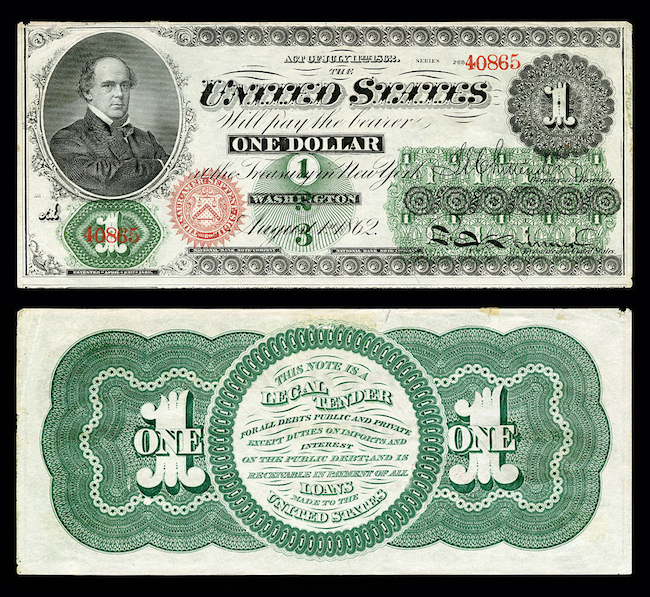Paper money in America got off to a very rocky start. Up until the Civil War, the only legal tenders authorized by the Federal government were gold and silver coins. That’s not to say that paper money didn’t exist. Individual banks were issuing their own notes and, by some accounts, there were as many as 8,000 different forms of money. To complicate matters, none of these notes were legal tender and if a bank went under, their notes became worthless.
There was another equally troublesome problem at this time – counterfeiting. Early banknotes were only printed on one side, using just black ink. Due to a relatively new invention, the camera, money was easy to photograph and copy. During the Civil War the U.S. Congress, in an effort to finance the war, authorized the production of $50 million worth of demand notes, America’s first official currency. To prevent counterfeiting, these new notes were printed on both sides, one side with black and green ink, the opposite side just using green ink. As a result, paper money soon became known as “greenbacks.” The special green ink was made from a patented process originally developed in Canada, and is said to get its colour, in part, from an unusual source – the leaves of palm trees.
